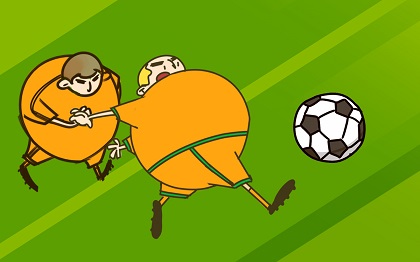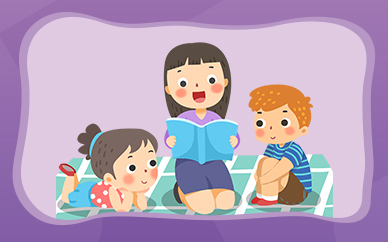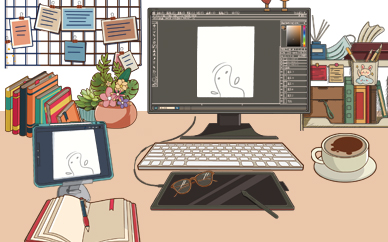跟着VPA的孩子们一起致敬艺术家!
“致敬艺术家”
VPA不光在学术上追求卓越,在艺术方面也有着不一般的追求。
 【资料图】
【资料图】
我们的艺术课程结合了国内外课程标准,从中提取精华,最后形成我们学校自己的课程体系。
在最近的单元中,我们的美术老师李皓带着大家一起致敬艺术家,每个年级学习了不一样的艺术家的风格和表现形式。最终将孩子们的作品一一展示在我们的达芬奇艺术长廊。
<<左滑查看英文 Swipe left for English
A Tribute to the Artists
VPA not only pursues excellence in academics, but also pursues something different in art education.
Our art course is a combination of our national and international standards, we absorb the essence of both, and form our own curriculum.
In the current unit, our art teacher, Helena Li, guided students to pay a tribute to different artists. They learned different art styles and ways of expression according to their grades. In the end of the unit, we presented every child’s work in the Da Vinci"s Gallery.
<<右滑查看中文
一年级“牵着线条去散步”
保罗·克利
保罗·克利是最富诗意的色彩建构大师。二十世纪变化最多、最难以理解和才华横溢的杰出艺术家之一。
学生作品
孩子们共同在一张纸上作画,让线条在纸上自由跳跃,随后再用油画棒、彩色粘土等材料上色。
<<左滑查看英文 Swipe left for English
Year 1"Holding the Lines For a Walk"
Paul Klee
Paul Klee was a natural draftsman, and through long experimentation developed a mastery of color and tonality.
Students" Works
Children drew together on the same huge page of paper, let the lines freely "jump" on it, then they used pastels and clays to make it colorful.
<<右滑查看中文
二年级“欧普艺术”
维克托·瓦萨雷里
维克托·瓦萨雷里被认为是欧普艺术中最杰出的开创者之一。围绕光学和感知,他创造出了独特的艺术美学。
学生作品
孩子们动手剪贴,画出一幅幅颜色绚丽的欧普艺术品。
孩子们兴奋地在自己的作品前合影
<<左滑查看英文 Swipe left for English
Year2 "Op Art"
Victor Vasarely
Victor Vasarelyis widely accepted as a "grandfather" and leader of theOp artmovement. He created unique art works based on optics and sensations.
Students" Works
Children made colorful op artworks through cutting, pasting, and coloring.
Taking a group photo excitingly
<<右滑查看中文
三年级“原生艺术”
让·杜布菲
让·杜布菲,法国画家、雕刻家和版画家,西方绘画史上的传奇人物,战后最具震撼力、最富创意,而又最不妥协的艺术家。他的风格--原生艺术,即抽象艺术,以粗、生、涩、涂抹为特点,使用沙子、泥土、石膏、木片、油灰、沥青、木炭等各种材料创作,表现天真童趣、原始、野性、随意、怪异美。
学生作品
孩子们一起“头脑大风暴”,为自己的作品共同构思。
<<左滑查看英文 Swipe left for English
Year 3 "Art Brut"
Jean Dubuffet
Jean Dubuffet is perhaps best known for founding the art movement of Art Brut. Many of Dubuffet"s works are painted inoil paintusing animpastothickened by materials such assand,tarandstraw, giving the work an unusually textured surface, to present the beauty of innocence, originality, wildness, and strangeness.
Students" Works
Children were having "brain storm" all together to think about their works.
<<右滑查看中文
四年级“米罗的外太空”
胡安·米罗
米罗是20世纪超现实主义绘画大师之一。他的画中往往没有什么明确具体的形,而只有一些线条、一些形的胚胎、一些类似于儿童涂鸦期的偶得形状。颜色非常简单,红、黄、绿、蓝、黑、白,在画面上被平涂成一个个的色块,却充满了隐喻、幽默、轻快,并且富有诗意。
学生作品
孩子们跟着米罗一起在“外太空”中遨游。
<<左滑查看英文 Swipe left for English
Year 4 "Miro"s Outer Space"
Joan Miró
His work has been interpreted asSurrealismbut with a personal style, sometimes also veering intoFauvismandExpressionism. He was notable for his interest in the unconscious or thesubconsciousmind, reflected in his re-creation of the childlike.
Students" Works
Children was drawing with "Miro"s Outer Space."
<<右滑查看中文
五年级“艺术圈中的音乐大师”
瓦西里·康定斯基
康定斯基被认为是抽象艺术的先驱,他可以十分清晰地听见色彩,音乐对他的艺术产生了主要影响。他甚至把他的绘画命名为“即兴”和“结构”,仿佛它们不是绘画而是音乐作品。
学生作品
学生们用着大胆的配色,用线条配合上色块,创造出独一无二的抽象艺术。
<<左滑查看英文 Swipe left for English
Year 5 "Musician in the Art World"
Wassily Kandinsky
Kandinsky is generally credited as one of the pioneers ofabstractioninwestern art. He could "hear" the colors, and music had a great influence in his art works. He defined his works into impressions, improvisations, and compositions, just like they are music sheets.
Students" Works
Students used colors boldly, combined lines with chunks, and created their unique art works.
<<右滑查看中文
以问题为导向的跨学科探究课程
我们从问题开始,以此为导向,开展单元课程。我们会向孩子们提问,比如我们会问他们“小时候有没有在墙上乱涂乱画的经历?”“从这些作品中能看出什么元素和特点?” 同时,我们也鼓励孩子们提问,充分发挥他们的好奇心。
网课时期老师让孩子们自由画线条
老师让他们带着问题去学习,产生自主能动性,通过自己的思考获取知识与技能,而不是靠老师单方面灌输。
课程大致分为四个步骤:
1
调研记录
培养孩子们的观察记录的能力
比如我们整个单元的课程从学习线条开始,先是让孩子们观察生活中的线条,从家里找出和线条相关的东西,他们提到了头发丝、毛线团、立交桥、鸟巢等。
2
探索
初步探索内容与材料
接着我们带着孩子们做线条练习,让他们听着音乐,随着音乐的节奏画线条。我们还跟四年级的孩子们提到了斐波那契螺旋线、黄金分割,实现了跨学科的教学。
3
发展
深入探究所学的内容
在发展阶段,我们给学生们展示了不同艺术家在线条上的表现形式,锻炼孩子们的批判性思维。
通过向艺术家、他们的风格及艺术形式学习,并且继续跨学科,我们的美术课变得丰富多彩。比如二年级的欧普艺术,结合了光学,五年级的康定斯基,结合了音乐。
4
呈现
作品的呈现及表达
在最后的呈现阶段,我们选择了环保材料做了废物利用,比如五年级的作品就是在我们废旧的纸壳上完成的,多余的纸壳我们还拿来做了画框。
<<左滑查看英文 Swipe left for English
Problem-Oriented Interdisciplinary Inquiry Course
We usually start with questions to open our units. We would post questions to children, such as "Have you drawn on the wall when you were little?" "What elements and characteristics can you see from these works?" And we also encourage children to ask questions, to express their creativities.
Free Drawings During Online Class
Our teacher will guide them through questions, and they will have agency to study. They will learned the knowledge and skills with independent thinking, and not only from teacher"s words.
The course is divided into 4 steps:
1
Research
Develop children"s ability to research
For example, our whole unit started by learning lines, and we asked children to observe the lines in daily life. They mentioned hairs, knitting wool, flyovers, nests, and so on.
2
Explore
Briefly explore the content and materials
Then we took them into line practice, we asked them to listen to the music and draw lines according to the rhythm. We also mentionsFibonacci Spiral and golden ratioto have the interdisciplinary teaching.
3
Develop
Develop into the content
During this period, we showed students the different styles from different artists, to encourge them to use critical thinking skill.
By learning from the artists, their styles and ways of expression, and continuing theinterdisciplinary teaching, our art class had plenty of fun. For example, we learned Op Art in Year 2 and it incorporated optics, and in Year 5, we had music with art.
4
Present
Final Expression
In the end of the whole process, we chose to use recycled materials to protect our planet. For example, the artworks from Year 5 were created on cardboards, and the rest of the cardboards was used to make the frames.
<<右滑查看中文
我们的目标是将初高中的课程低龄化渗入,不管以后是否走上艺术的道路,我们都希望能让孩子们从小养成一个有规律、有框架的思考方式。
我们还会给对美术抱有兴趣,且愿意展示的孩子们布置微型展览馆,让每个孩子都有机会展示自己的作品。
学生个人微型展览馆
每周四放学后我们还有“艺术实验室”社团,孩子们可以在艺术中探索新的乐趣。
艺术实验室
在VPA,每一门课程学的都不光光是学科上的知识,我们希望通过各个科目来给予孩子们终身的财富,那就是:有逻辑的思维模式以及解决问题的能力。拥有这些“小脑筋”和“超能力”,孩子们走到哪里都不怕。
<<左滑查看英文 Swipe left for English
Our goal is to make the course for middle and high school lower for the young kids. Whether they will pursue in the field of art or not, we hope they can form an organized way of thinking.
We also provide opportunity for children who love art and are willing to show their works. We set up a micro art show for everyone to present their works.
Micro Art Show of a student
Every Thursday we have a club called Art Lab after school, and it"s a time for children to explore more fun ways of doing art.
Art Lab
At VPA, every class is not only teaching the knowledge of that single subject, we hope to provide the life-long "wealth" for students, and that includes: the way of thinking with logics and the ability to solve problems. Children who own those "brains" and "super powers" will not be afraid to go anywhere.
<<右滑查看中文























 营业执照公示信息
营业执照公示信息